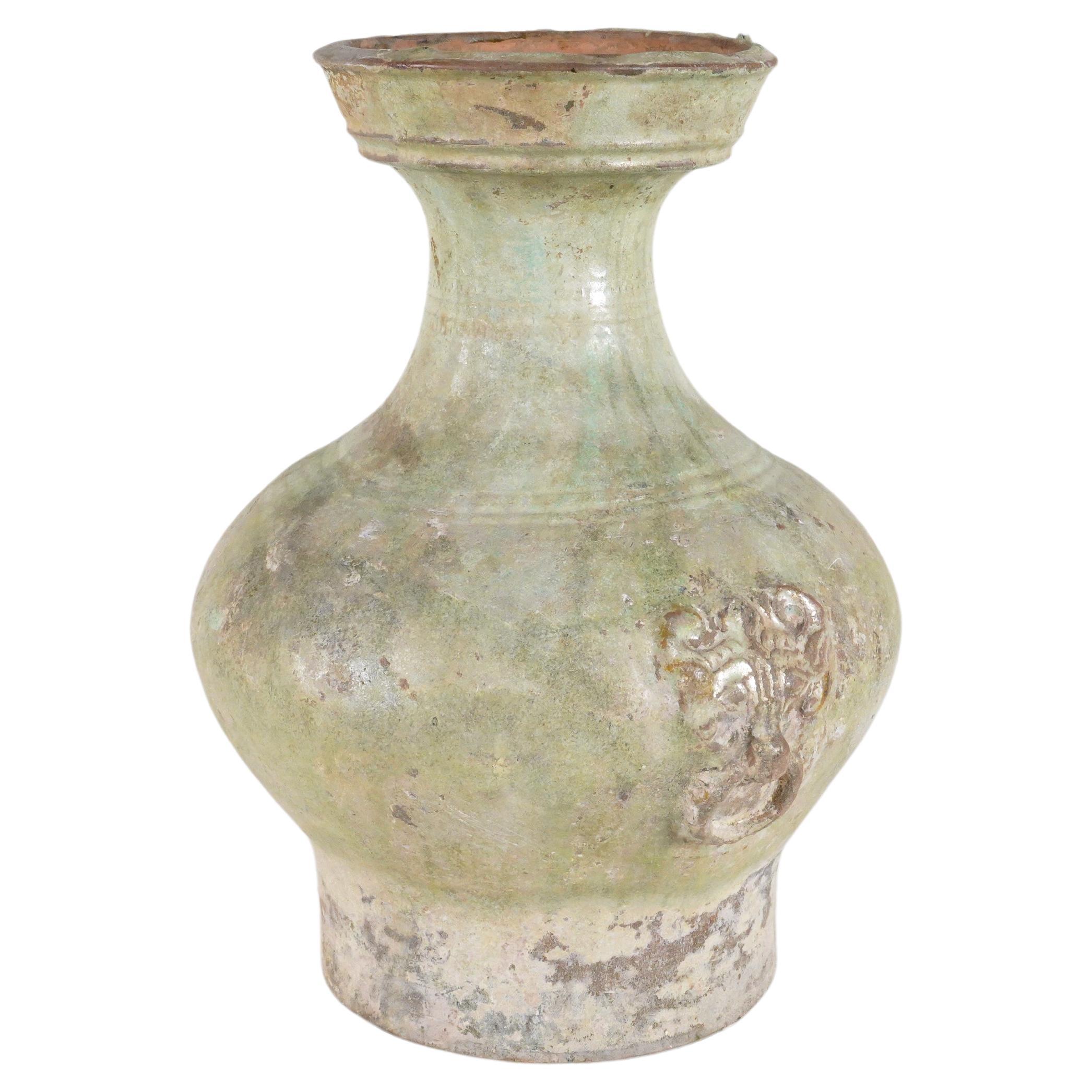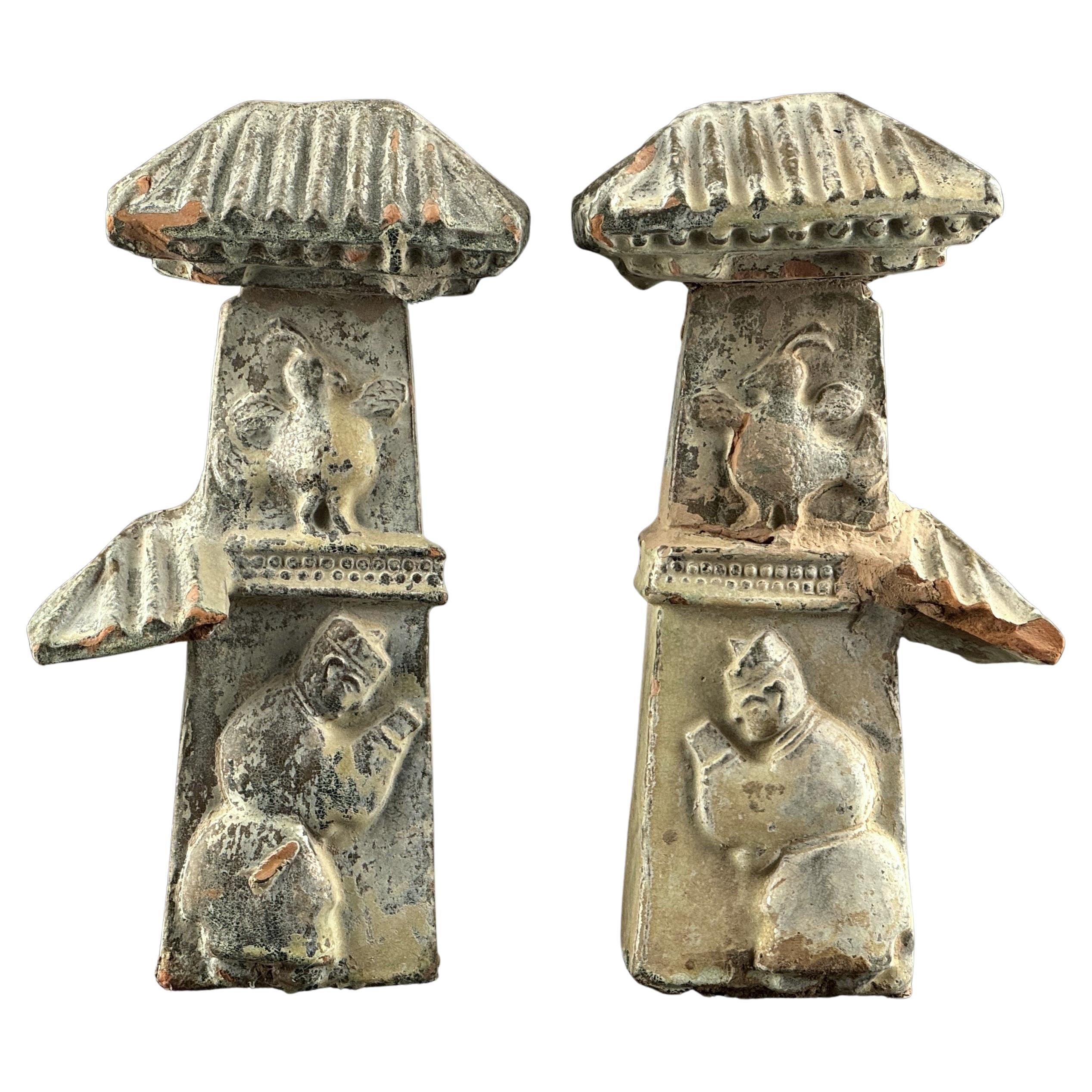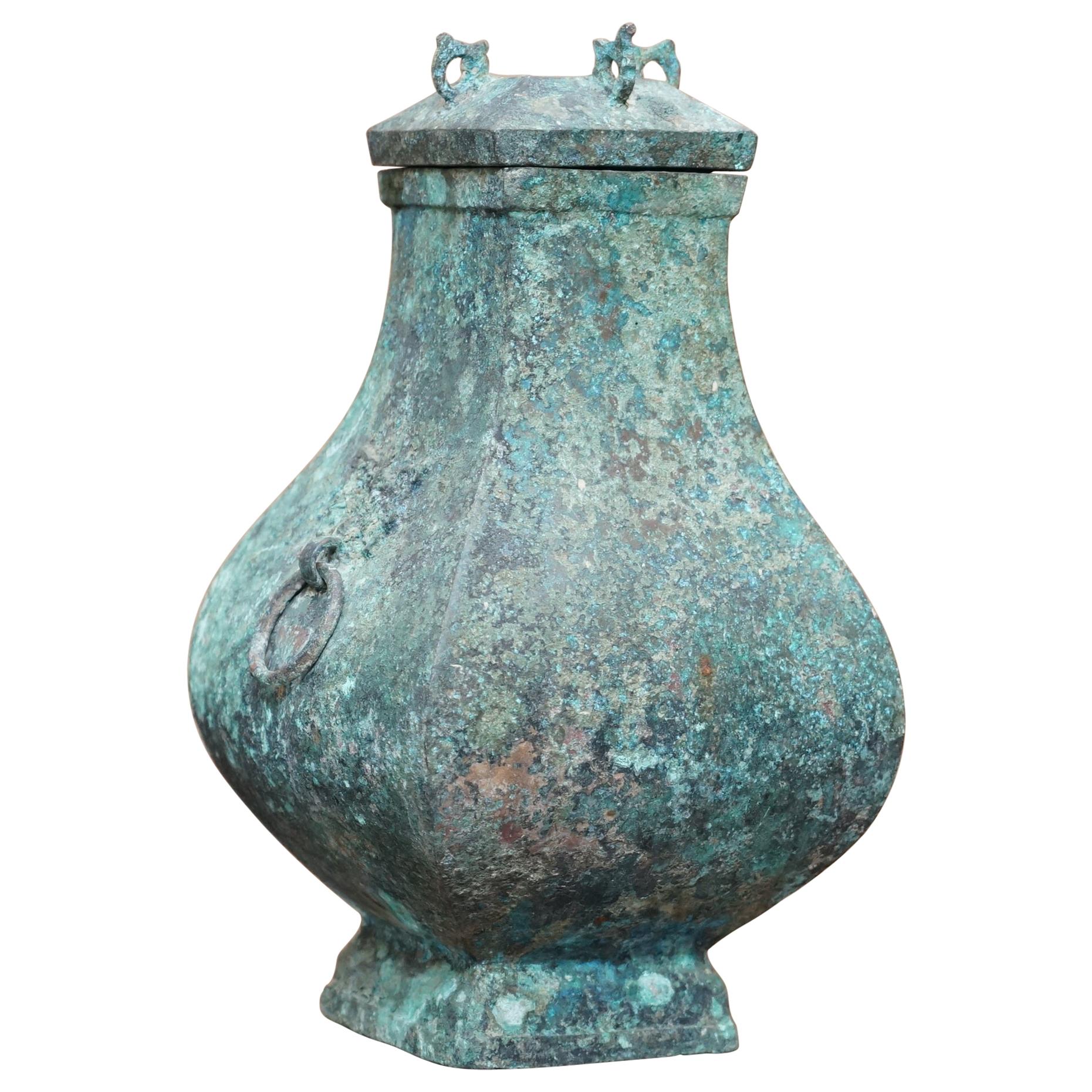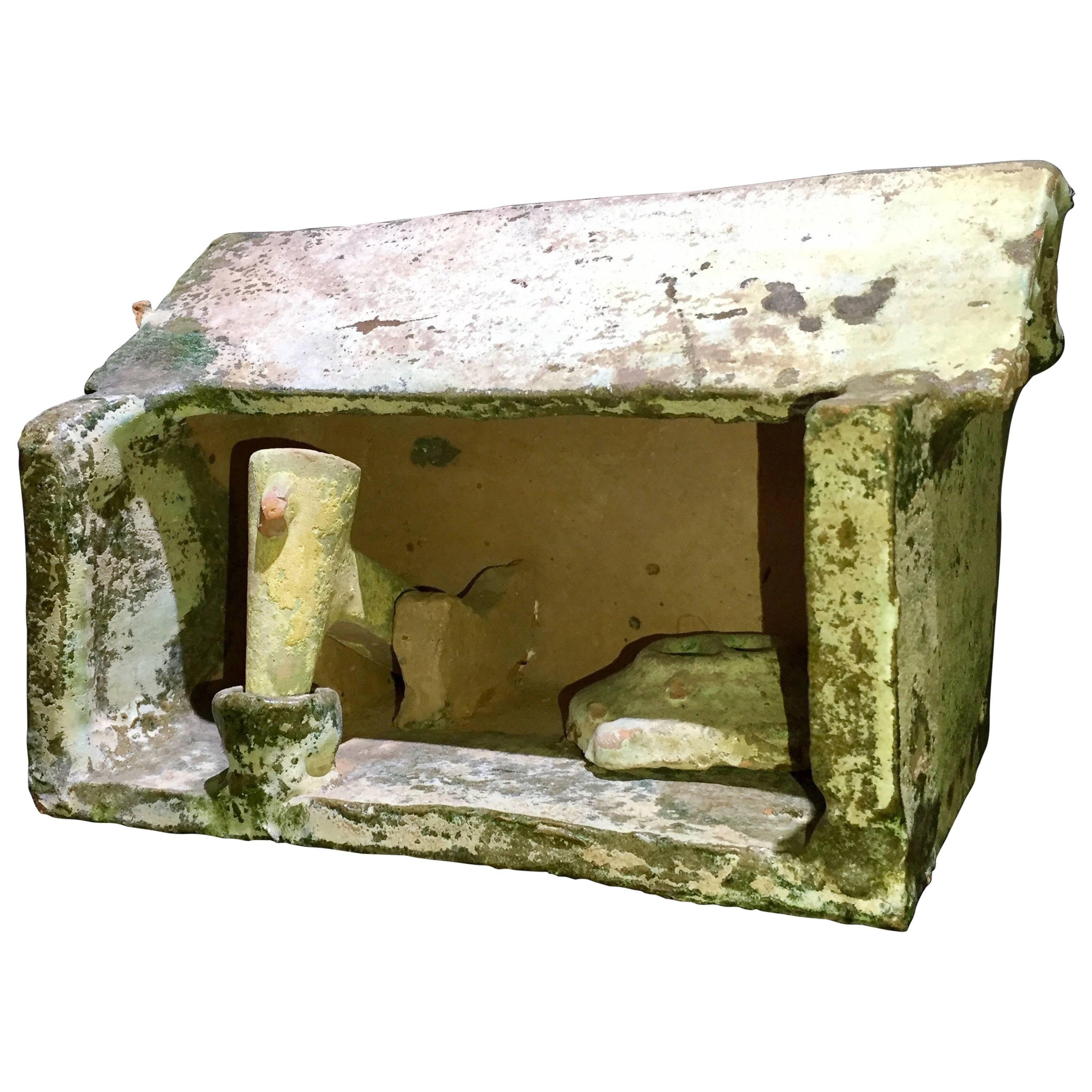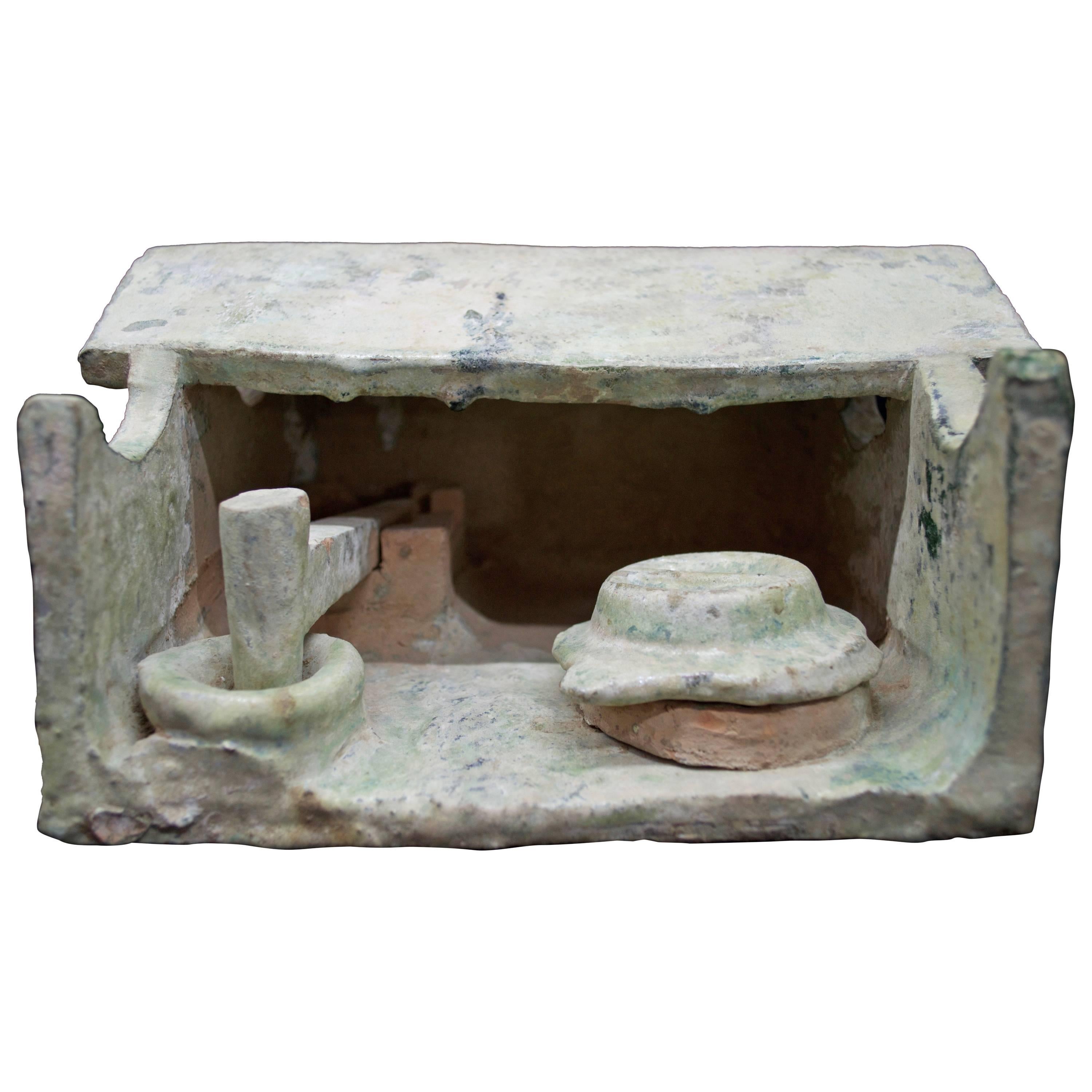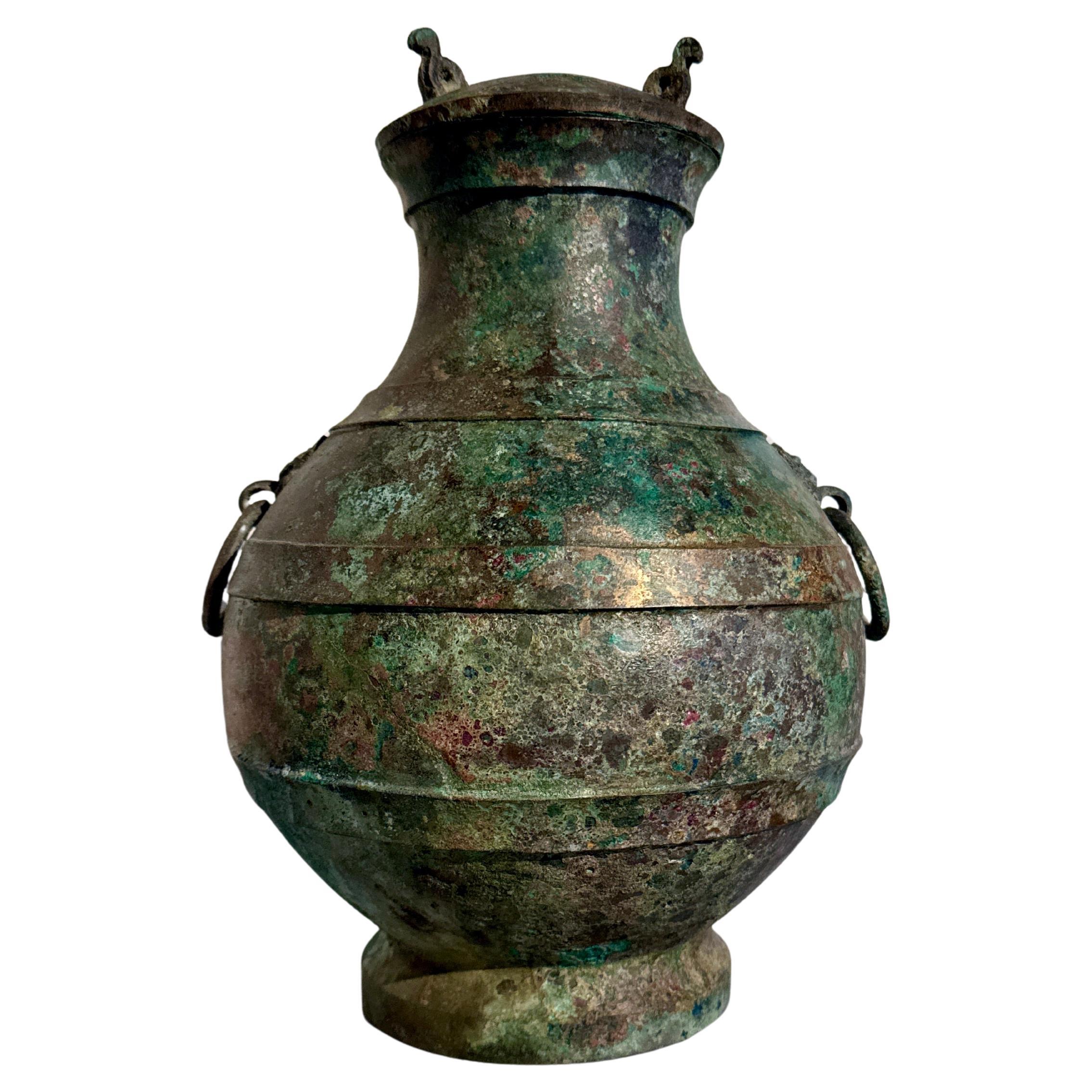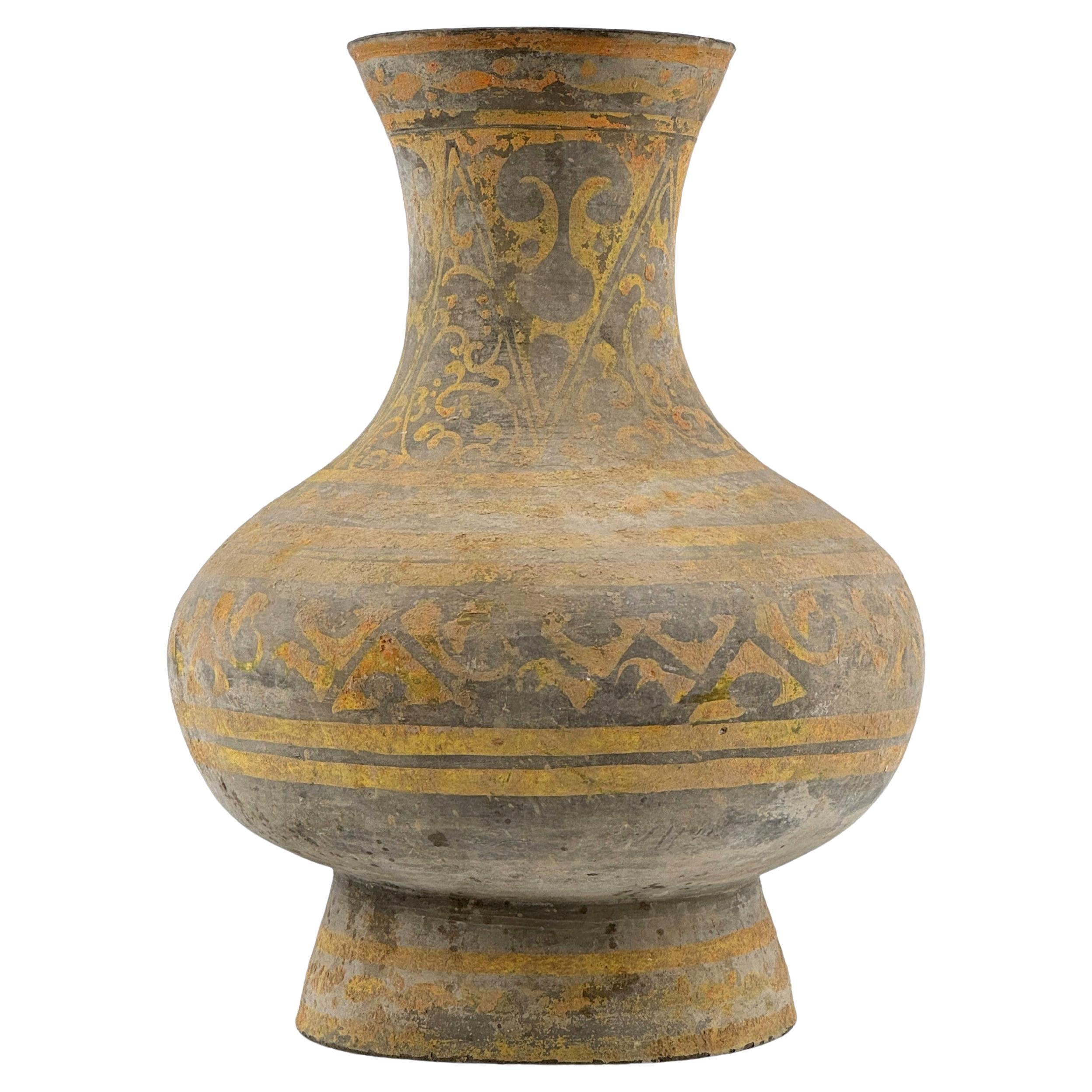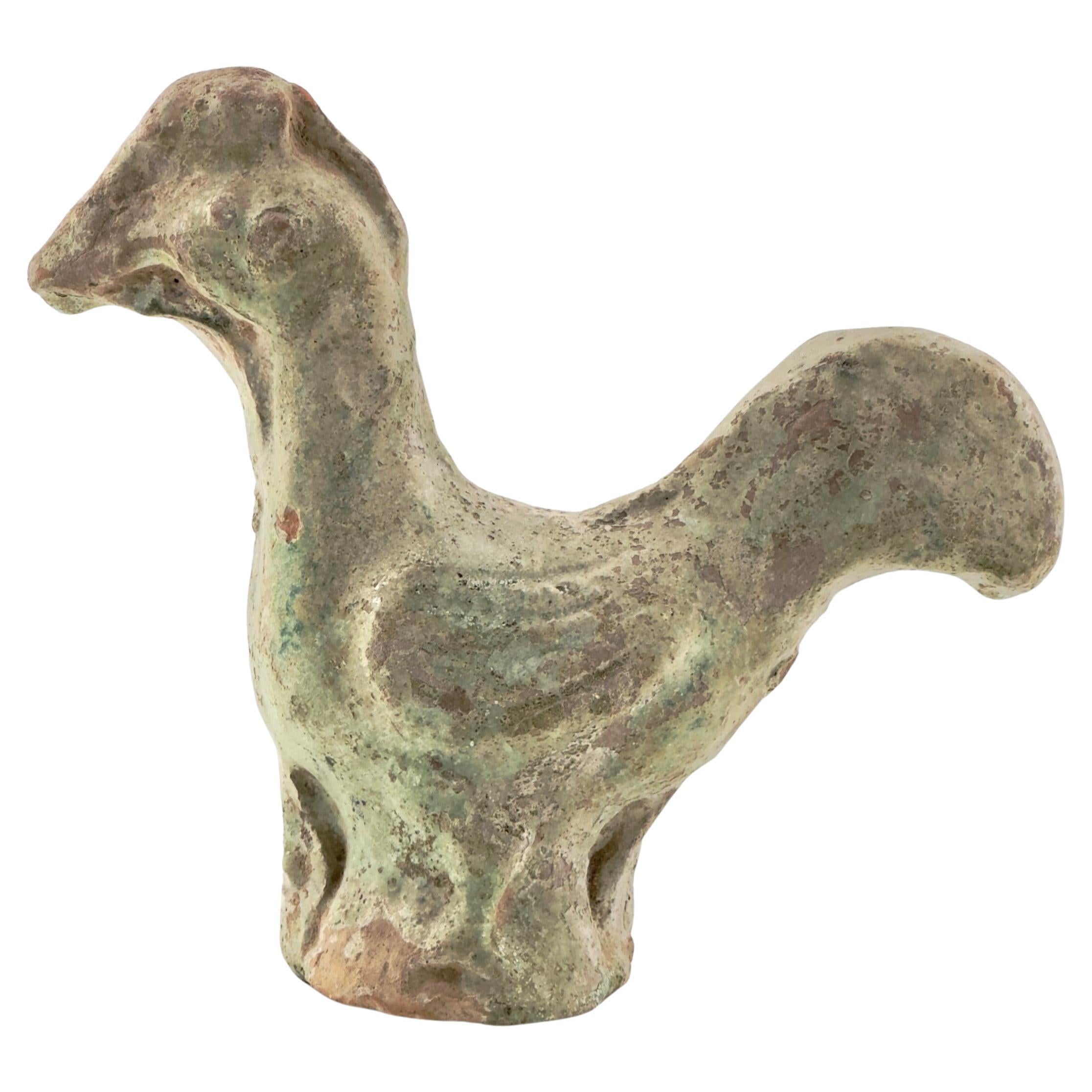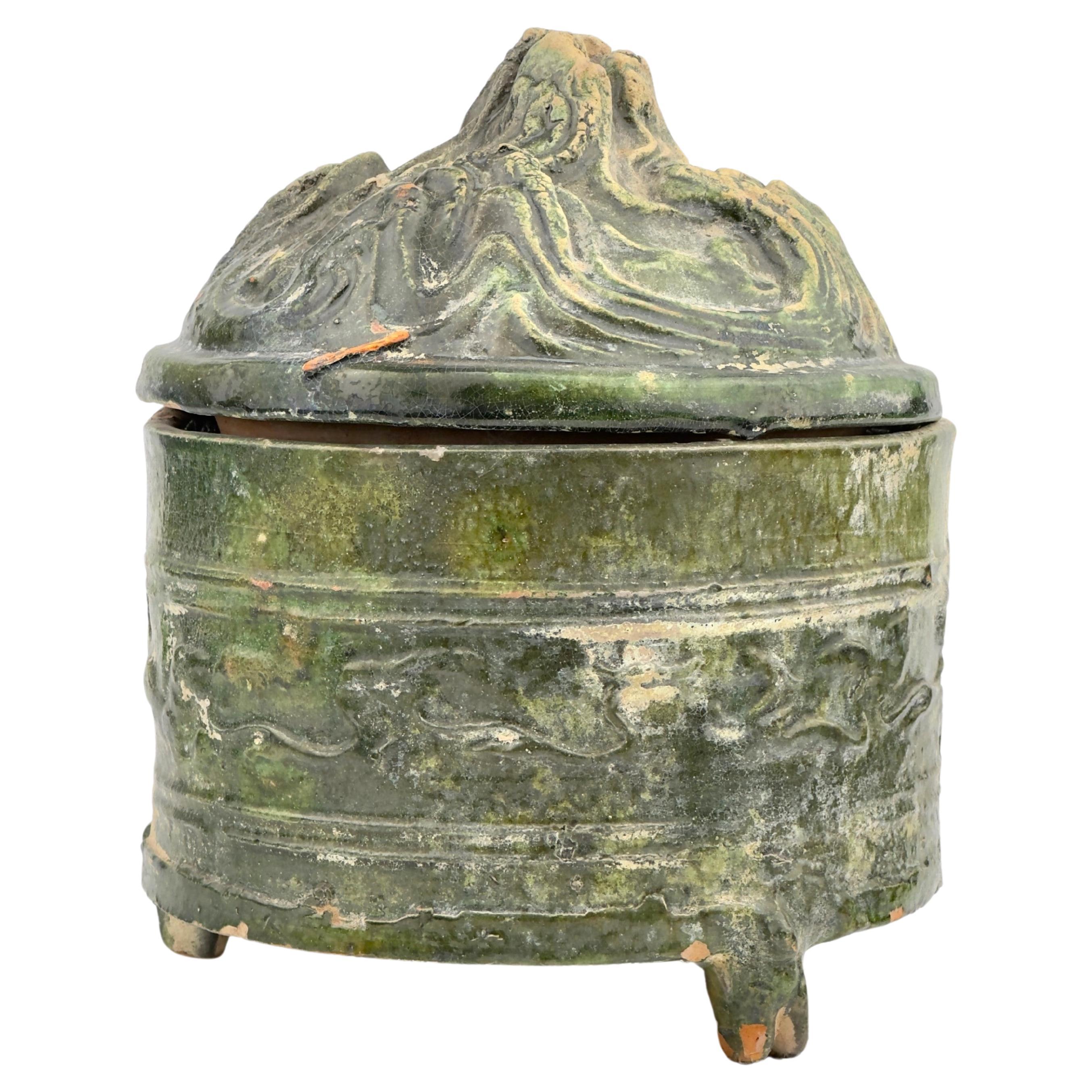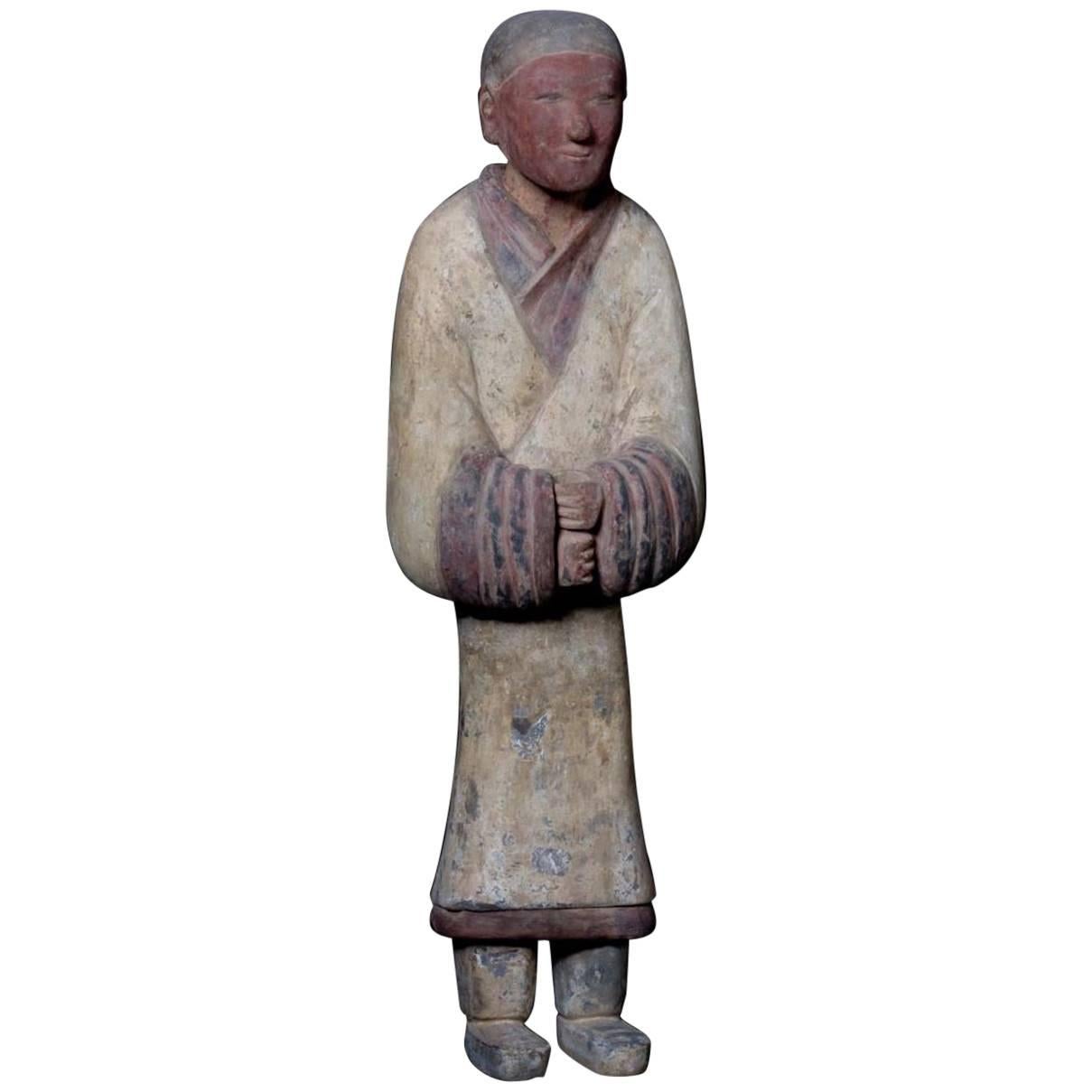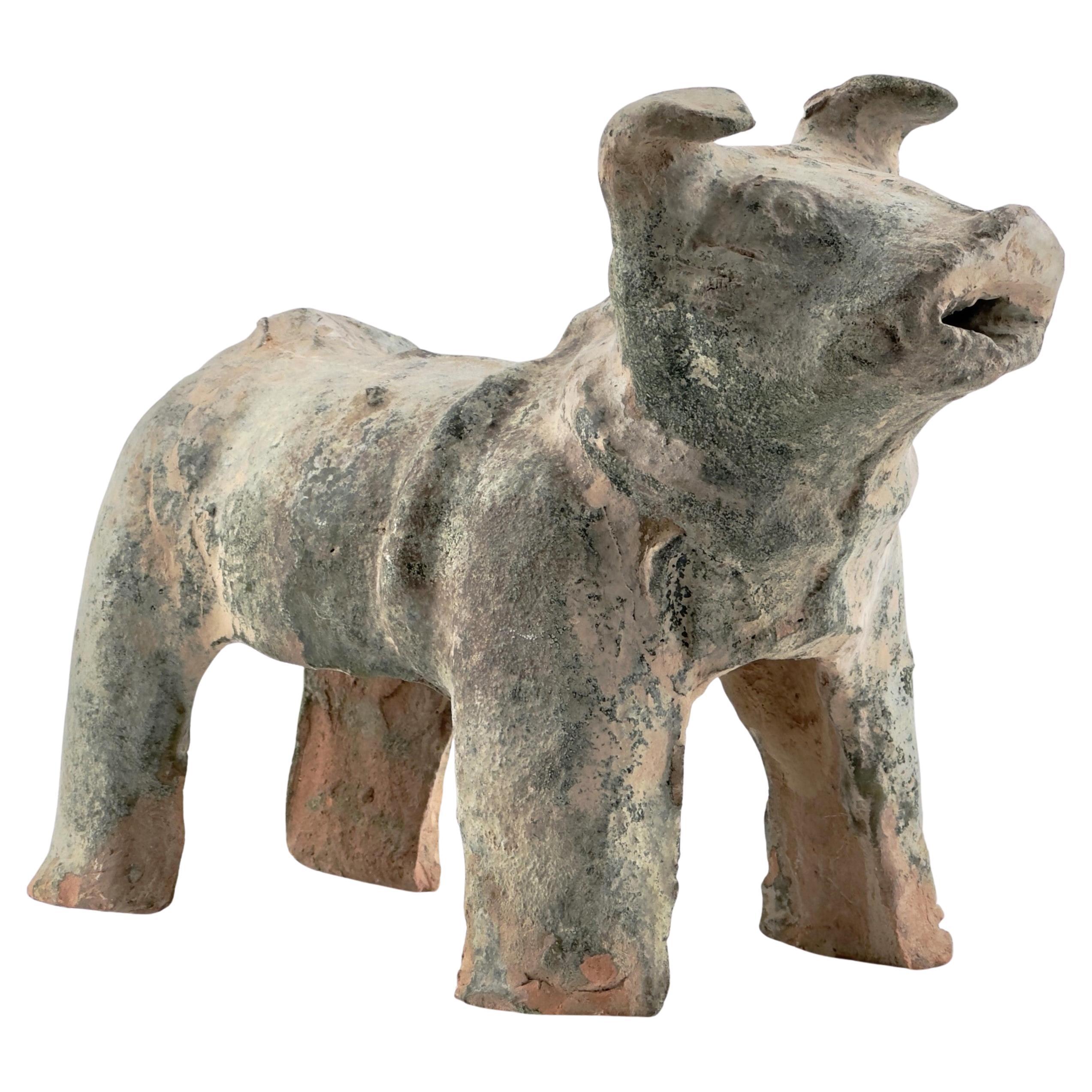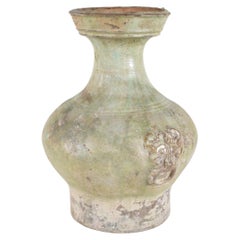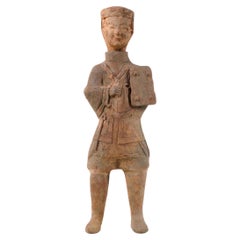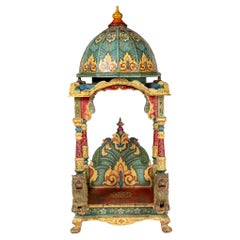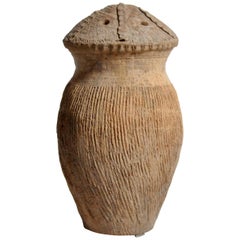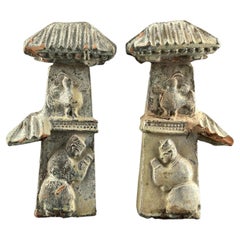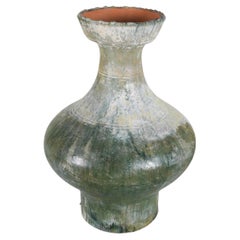
A Large Han Dynasty (206BC-220AD) Glazed Hu Vessel
View Similar Items
Want more images or videos?
Request additional images or videos from the seller
1 of 9
A Large Han Dynasty (206BC-220AD) Glazed Hu Vessel
About the Item
- Dimensions:Height: 18 in (45.72 cm)Diameter: 13 in (33.02 cm)
- Style:Han (Of the Period)
- Materials and Techniques:
- Place of Origin:
- Period:
- Date of Manufacture:206BC-220AD
- Condition:Wear consistent with age and use.
- Seller Location:Chicago, IL
- Reference Number:Seller: RHS0221stDibs: LU886437128872
About the Seller
4.9
Gold Seller
Premium sellers maintaining a 4.3+ rating and 24-hour response times
Established in 1989
1stDibs seller since 2010
434 sales on 1stDibs
Authenticity Guarantee
In the unlikely event there’s an issue with an item’s authenticity, contact us within 1 year for a full refund. DetailsMoney-Back Guarantee
If your item is not as described, is damaged in transit, or does not arrive, contact us within 7 days for a full refund. Details24-Hour Cancellation
You have a 24-hour grace period in which to reconsider your purchase, with no questions asked.Vetted Professional Sellers
Our world-class sellers must adhere to strict standards for service and quality, maintaining the integrity of our listings.Price-Match Guarantee
If you find that a seller listed the same item for a lower price elsewhere, we’ll match it.Trusted Global Delivery
Our best-in-class carrier network provides specialized shipping options worldwide, including custom delivery.More From This Seller
View AllA Han (206BC -220AD) Glazed Hu Vessel
Located in Chicago, IL
This is a fine, heavily patinated example of a Han hu wine storage vessel, buried for the afterlife. The compressed globular body narrows to a slender waisted neck, covered with a da...
Category
Antique 15th Century and Earlier Chinese Han Antiquities
Materials
Terracotta
A Han Dynasty Terracotta Figure
Located in Chicago, IL
A large Chinese terracotta tomb figure (Ni Yong) from the Eastern Han Dynasty (25-220 AD), likely from the area of modern-day Sichuan. It appears to depict a groom in full costume an...
Category
Antique 15th Century and Earlier Chinese Antiquities
Materials
Terracotta
$12,600 Sale Price
30% Off
Wooden Wedding Bride Doli Palanquin
Located in Chicago, IL
This 1900's Gujarati doli, an enclosed palanquin, was traditionally used to transport brides from their home to the groom's residence, symbolizing the bride's ceremonial entrance int...
Category
Early 20th Century Indian Antiquities
Materials
Teak
Neolithic Vessel
Located in Chicago, IL
Northern China has a settled history that goes back more than 5,000 years. All along the western reaches of the Yellow River settlements sprung up and some of the first evidence we h...
Category
Antique 15th Century and Earlier Chinese Jars
Materials
Terracotta
$4,000
Large Indian Storage Chest on Wheels
Located in Chicago, IL
A superb example of an Indian (Gujarat) dowry chest with ornate frame, iron reinforcements and wheels. These chests were used to hold blankets and other valuables. The small upper door could be locked...
Category
Early 20th Century Blanket Chests
Materials
Teak
$2,400 Sale Price
50% Off
A Large Biomorphic Planter by Willy Guhl, Switzerland, c.1960
By Willy Guhl
Located in Chicago, IL
A large, exceptional garden planter designed by Willy Guhl for Eternit in Switzerland circa 1960, known as a biomorphic or 'Clam Shell' planter. Resembling the architect's iconic ele...
Category
Late 20th Century Swiss Planters and Jardinieres
Materials
Cement
$2,800 Sale Price
20% Off
You May Also Like
Gate Pillar, Han Dynasty(206BC-220AD)
Located in seoul, KR
The Han Dynasty gate pillar held by the Asian Art Museum in San Francisco and this gate pillar are the only known examples of their type worldwide, highlighting its extraordinary rar...
Category
Antique 15th Century and Earlier Hong Kong Han Antiquities
Materials
Earthenware
$5,985 Sale Price / set
25% Off
Ancient China Monumental Stone Ram Han Dynasty, 206BC-220AD
Located in South Burlington, VT
China, a large votive model of a stone ram, Han dynasty (206BC-220AD)
Dimensions: 45cm, 18 inches high and 65cm, 26 inches length and 25cm, 10 inches wi...
Category
Antique 15th Century and Earlier Chinese Han Sculptures and Carvings
Materials
Limestone
Fanghu Han Dynasty 206BC-220AD Chinese Bronze Ritual Wine Vessel Jug & Cover
Located in West Sussex, Pulborough
We are delighted to offer for sale this exceptionally important and highly collectable museum quality original Chinese bronze ritual wine vessel and...
Category
Antique 15th Century and Earlier Chinese Han Antiquities
Materials
Bronze
$33,177 Sale Price
20% Off
Eastern Han Dynasty Terracotta Barn Workshop, China '206BC - 220AD' Ex-Museum
Located in San Pedro Garza Garcia, Nuevo Leon
Slab pottery constructed barn workshop having a peaked roof – open walled form with a mechanical pounder and a large round covered storage container. Light blue-green mottled glazed surface with some iridescence patina to the glaze.
Condition: Intact, excellent condition, an unusual example.
Provenance: The Living Torah Museum, Brooklyn; ex. Sands of Time, 2002.
Sculptural effigies of domesticated animals were often interred in the tombs of nobility and elite members of the social hierarchy. Models like this one were made to represent everything from simple goat or pig pens to the most elaborate towers and palaces. Because very few ancient Chinese buildings have survived intact, these models, along with descriptions from ancient texts, give a good representation of what the buildings might have looked like.
This fantastic piece is accompanied by a Certificate of Authenticity.
Burial figurines of graceful dancers, mystical beasts, and everyday objects reveal both how people in early China approached death and how they lived. Since people viewed the afterlife as an extension of worldly life, these figurines, called mingqi, sometimes referred as “spirit utensils” or “vessels of ghosts” disclose details of routine existence and provide insights into belief systems over a thousand-year period. For the first time in Chinese history, we have images of rural and daily life during the Han in the form of contemporary...
Category
Antique 15th Century and Earlier Chinese Han Antiquities
Materials
Terracotta
Eastern Han Dynasty Terracotta Model of a Paper Mill , China '206BC - 220AD'
Located in San Pedro Garza Garcia, Nuevo Leon
Slab pottery constructed Model of a Paper Mill, in Green and Cream Color Glazed Terracotta having a peaked roof – open walled form with a mechanical pounder and a large round storage container. Light blue-green mottled glazed surface with some iridescence patina to the glaze. The Iridescence is a refraction of the layers on the glass that produces multicolor hues & metallic luster, and only develops after one thousand years of being buried in the ground. An unquestionable mark of antiquity, impossible to falsify.
Han Dynasty, dated 206 B.C-220 A.D.
Condition: Excellent, wear commensurate with age, an unusual example.
This fantastic piece is accompanied by a Certificate of Authenticity.
Sculptural effigies of domesticated animals were often interred in the tombs of nobility and elite members of the social hierarchy. Models like this one were made to represent everything from simple goat or pig pens to the most elaborate towers and palaces. Because very few ancient Chinese buildings have survived intact, these models, along with descriptions from ancient texts, give a good representation of what the buildings might have looked like.
Burial figurines of graceful dancers, mystical beasts, and everyday objects reveal both how people in early China approached death and how they lived. Since people viewed the afterlife as an extension of worldly life, these figurines, called mingqi, sometimes referred as “spirit utensils” or “vessels of ghosts” disclose details of routine existence and provide insights into belief systems over a thousand-year period. For the first time in Chinese history, we have images of rural and daily life during the Han in the form of contemporary records...
Category
Antique 15th Century and Earlier Chinese Han Antiquities
Materials
Terracotta
Chinese Archaic Bronze Hu and Cover, Han Dynasty (206 BC - 220 AD), China
Located in Austin, TX
A fantastic Chinese Han Dynasty archaic bronze ritual wine vessel, hu, and cover, ex. Michael Goedhuis, Han Dynasty (206 BC - 220 AD), China.
The archaic ritual bronze hu of typical...
Category
Antique 15th Century and Earlier Chinese Han Antiquities
Materials
Bronze
Recently Viewed
View AllMore Ways To Browse
Vegetable Ring
Shang Antique
Shang Bronze
Shang Dynasty Bronze
Chinese Bronze Wine Vessel
Vintage Atomic Era Sofa Or Sectional
Teak Or Rosewood Dining Table
Racetrack Or Oval Dining Tables
Mahogany Nightstand Or End Table By Hickory Manufacturing
Ndustrial Metal Cabinet Glass Doors For Display Or Bookcase
Sheridan Or Regency Dining Chairs
Meriden Silver Co Silverplated Coffee Or Tea Pot
Antique Brass Jardiniere For Plants Or Flowers
Victorian Dresser Base Or Sideboard
Modern Handmade Rugs Roung Or Irregular Shape
Silver Cigar Box Or Humidor
Navy Blue Sideboard Or Buffet
French Or Italian Decorative Glass Soap Dish
